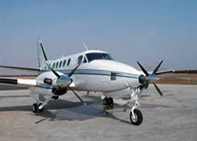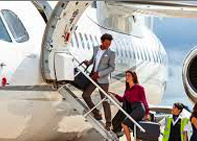Time is a crucial aspect of critical care for patients. Patients in regional Australia will soon experience the benefit of getting treated by doctors on medical jets, which would be a genuine time-and-life saviour.
The Swiss company, Pilatus, has reportedly spent around three years designing the $13 million purpose-built jets for Australia’s Royal Flying Doctor Service (RFDS). And, the PC-24s are developed in partnership with Swiss engineering and completions company Aerolite AG.
The first of the six new PC-24s has arrived recently in Western Australia (WA), highlighting the debut of the superlight business jet in an air ambulance configuration. One of the PC-24s would be based at Perth’s Jandakot Airport, and the other would be in Broome. A third medical jet would arrive somewhere in February in Adelaide and service South Australia and the Northern Territory.
In this context, Pilatus chairman Oscar Schwenk stated that the twinjet as an emergency ward in the sky would extend long-haul, critical care for patients throughout the country. RFDS WA chief executive officer Rebecca Tomkinson reiterated that the Jets would save around two hours of travel time on a Perth to Broome trip. And added that on a journey to the Goldfields, it would be about 30 minutes faster. She said that the jets could reach speeds of around 740 kilometres per hour, which would halve the travel time to remote parts of the state. The Jets would also have greater capacity than the PC-12 RFDS planes, and the pressurized cabins would carry three stretchered patients and two medical teams.
Meanwhile, Pilatus general aviation vice president Ignaz Gretener stated that the PC-24 was the world’s first jet to facilitate the safe, ultra-easy loading and unloading of patients on a bespoke electric stretcher loading device. The newly appointed RFDS WA general manager of aviation Geoff Horsley reiterated that his aviation team felt privileged to use the new aircraft to improve the response time for patients across the state. He added that it would cut the retrieval times in half, specifically the remote areas in the distant Ngaanyatjarra Lands, the Pilbara, the Kimberley and such places.
It is reported that pilots and engineers have completed advanced training overseas, and doctors and nurses would be trained over the coming weeks. The WA jets are expected to come into service in March. The initial total cost is around $26 million, which would be inclusive of $10 million worth of contribution from the mining giant Rio Tinto and $4.5 million from the Federal Government. Over the coming four years, the service would mostly seek additional funding from businesses, the government, and the community.







Leave a Reply
You must be logged in to post a comment.